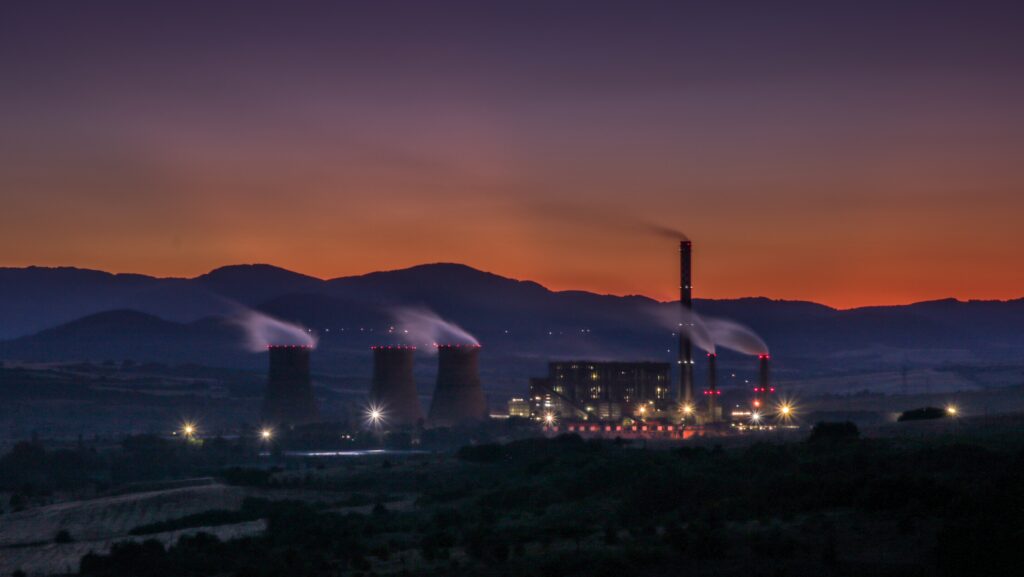Have you ever wondered if solar panels can generate electricity at night? The answer may surprise you. While solar panels do rely on sunlight to produce energy, they are not completely ineffective after the sun sets. Thanks to the advancements in technology, solar panels can still generate a small amount of electricity even during the night. In this article, we will explore the fascinating concept of solar panels and their ability to generate power in the absence of sunlight. So, let’s shed some light on this intriguing topic and discover how solar panels continue to harness energy even in the darkest hours.
Understanding Solar Panels
Solar panels are devices that convert sunlight into electricity through the photovoltaic effect. They have been gaining popularity as a renewable energy source, contributing to a greener and more sustainable future. To truly understand solar panels, it is crucial to delve into how they work and explore their various components.
How Solar Panels Work
Solar panels work by harnessing the power of the sun’s rays and converting them into usable electricity. This process begins with the absorption of sunlight by the solar cells, which are made up of semiconductor materials such as silicon. When the photons from sunlight strike these cells, they transfer their energy to the electrons within the material.
The photovoltaic effect is the key mechanism that enables this energy conversion. As the energized electrons move within the semiconductor material, they create an electrical current. This current is then captured by metal conductors attached to the solar cells and transferred to an inverter, which converts it into usable alternating current (AC) electricity.
Components of a Solar Panel
While solar panels may seem simple on the surface, they consist of several essential components that work together to generate electricity. The most vital part of a solar panel is the solar cells, as they are responsible for the conversion of sunlight into electric energy. These cells are connected and protected by a transparent cover or encapsulant, ensuring their longevity and functionality.
To provide structural support and protection, solar panels are typically housed in a durable frame made of aluminum or steel. This frame also allows for easy installation and positioning of the panels for maximum sun exposure. Additionally, most solar panels are equipped with a junction box, which houses electrical connections that facilitate the transfer of electricity from the panels to the inverter.
The Role of Sunlight in Electricity Generation
Sunlight plays a pivotal role in the generation of electricity through solar panels. Without an abundant supply of sunlight, solar panels would not be able to convert energy efficiently. Understanding how sunlight functions as an energy source and its interaction with solar panels is crucial to comprehending the limitations and possibilities of solar energy.
Sunlight as an Energy Source
Sunlight is an abundant and free source of energy that has been powering life on Earth for billions of years. It contains a spectrum of electromagnetic radiation, including visible light and ultraviolet (UV) light. The photons within sunlight carry energy, and it is this energy that solar panels harness and convert into electrical energy.
Photovoltaic Effect and Sunlight
The photovoltaic effect occurs when sunlight, consisting of photons, strikes the solar cells within a panel. The photons are absorbed by the semiconductor material, causing the electrons to gain energy and creating an electrical current. The efficiency of this process depends on various factors, such as the quality of the solar cells and the intensity and angle at which sunlight hits the panels.
Limitations of Solar Energy
While solar energy is abundant and renewable, it does have inherent limitations. Firstly, solar energy is intermittent, as it relies on the availability of sunlight. This means that solar panels cannot generate electricity during the night or in cloudy weather when sunlight is scarce. Additionally, the overall efficiency of solar panels can be affected by factors such as shading, temperature, and the angle at which the panels are positioned.
Can Solar Panels Generate Electricity at Night?
The inability to generate electricity at night has long been considered a significant drawback of solar panels. After all, if solar panels rely on sunlight, it would seem logical that they cannot generate electricity when the sun is not shining. However, recent advancements and innovations in solar energy technology have challenged this notion.
Direct Energy Generation at Night
The concept of directly generating electricity from solar panels at night may seem contradictory; however, it is not entirely impossible. While solar panels cannot generate electricity in the absence of sunlight, there have been experiments and studies exploring the potential for night-time energy generation through alternative means.
Indirect Methods of Energy Generation
Although solar panels cannot directly generate electricity at night, there are indirect methods that can still harness solar energy during nighttime hours. One such method involves the use of energy storage systems, where excess energy generated during the day is stored in batteries or other storage mediums. This stored energy can then be utilized during the night when solar panels cannot produce electricity.
Factors Affecting Solar Panel Efficiency at Night
Numerous factors affect the efficiency of solar panels at night, even when considering indirect methods of energy generation. It is important to consider these factors to understand the limitations and potential challenges associated with night-time solar energy conversion.
Exploring the Possibility
Scientific research has aimed to explore the possibility of direct night-time solar energy generation. Different techniques and approaches have been tested, with some focusing on alternative light sources and others exploring the potential of using low levels of moonlight.
Experiments and Studies on Night-Time Solar Energy Generation
Various experiments and studies have been conducted to understand the feasibility of night-time solar energy generation. Researchers have tested the efficiency of solar panels under different light conditions, including moonlight and artificial light sources.
Results and Limitations of Direct Night-Time Generation
While experiments have shown that solar panels can produce small amounts of electricity in extremely low light conditions, such as moonlight, the efficiency of energy conversion remains significantly lower compared to direct sunlight. Additionally, the cost and feasibility of implementing such systems on a large scale must be considered.

Indirect Methods of Energy Generation at Night
While direct night-time solar energy generation may present challenges, there have been notable advancements in indirect methods that offer potential solutions. These methods involve storing energy generated during the day and utilizing it at night or when sunlight is unavailable.
Solar Energy Storage Systems
Energy storage systems, such as batteries, have emerged as an effective means of storing excess energy generated by solar panels during daylight hours. These systems allow the captured energy to be stored and used at night, overcoming the limited electricity generation during non-sunlight hours.
Grid-Tied Solar Systems
Grid-tied solar systems offer another indirect method of night-time energy generation. With this setup, excess energy generated by solar panels during the day is fed into the electrical grid. During the night, or when solar generation is insufficient, electricity can be drawn from the grid, ensuring a continuous power supply.
Technological Advancements in Solar Energy Storage
Technological advancements in solar energy storage have greatly improved the efficiency and viability of storing solar energy for nighttime use. Lithium-ion batteries, in particular, have become more affordable and efficient, making them a popular choice for residential and commercial energy storage applications.
Factors Affecting Solar Panel Efficiency at Night
Several factors can influence the performance and efficiency of solar panels at night, even when utilizing indirect methods of energy generation. It is crucial to consider these factors to optimize the design and installation of solar systems.
Environmental Factors
Environmental conditions, such as the level of ambient light and the presence of clouds or fog, can directly impact the efficiency of solar panels. Reduced ambient light during night hours and adverse weather conditions can limit the amount of energy that solar panels can generate or store.
Direction and Positioning of Solar Panels
The direction and positioning of solar panels play a significant role in optimizing their efficiency, even at night. Panels should be oriented to maximize exposure to available moonlight or artificial light sources, ensuring optimal energy capture.
Technology and Design of Solar Panels
Advancements in solar panel technology and design have led to improved efficiency and performance, even during low-light conditions. Innovations such as bifacial solar panels, which can capture light from both the front and rear sides, have shown potential for enhanced night-time energy generation.

Overcoming the Limitations of Night-Time Solar Energy Generation
While night-time solar energy generation has its limitations, there are several ways in which these limitations can be overcome or mitigated to maximize the benefits of solar panels.
Advancements in Technology
Continued advancements in solar panel technology and energy storage systems can significantly improve night-time solar energy generation. Research and development efforts are focused on increasing the efficiency of solar panels under low-light conditions and developing more cost-effective energy storage solutions.
Government Policies and Incentives
Government policies and incentives can also play a crucial role in promoting night-time solar energy generation. Supportive policies, such as feed-in tariffs or tax incentives, can encourage the adoption of solar panels and incentivize the implementation of energy storage systems, making night-time energy generation more viable for both individuals and businesses.
Community Solar Initiatives
Community solar initiatives present opportunities to overcome the limitations of night-time solar energy generation. By pooling resources and sharing the energy generated during the day, communities can ensure a continuous power supply, even at night.
Future of Solar Energy Generation at Night
The future of solar energy generation at night is full of potential. Emerging technologies and ongoing experimentation hold promise for increased efficiency and improved night-time energy generation capabilities.
Emerging Technologies and Experimentation
Scientists and researchers are continually exploring new technologies and materials to enhance the efficiency of solar panels under low-light conditions. For instance, perovskite solar cells have shown promise in generating electricity even in low-light or artificial light environments.
Potential Impact on Electricity and Energy Sector
The ability to generate electricity from solar panels at night on a larger scale could have a significant impact on the electricity and energy sector. With improved efficiency and storage capabilities, solar energy could become a more reliable and accessible source of power, reducing our dependence on traditional fossil fuel-based electricity generation.
Sustainability and Environmental Impact
Night-time solar energy generation has the potential to contribute further to sustainability and the reduction of environmental impact. By reducing carbon footprints and greenhouse gas emissions associated with traditional energy sources, solar panels in combination with energy storage systems can help achieve a greener and more sustainable energy future.

Benefits of Solar Energy Generation at Night
While there are limitations and challenges associated with night-time solar energy generation, there are also numerous benefits that make it an appealing option.
Continuous Power Supply
By utilizing energy storage systems or grid-tied solar setups, solar panels can provide a continuous power supply even during nighttime hours. This reduces reliance on the electrical grid and ensures a reliable source of electricity.
Reducing Dependency on the Grid
Generating electricity at night through solar panels reduces dependency on the traditional electrical grid powered by fossil fuels. This not only promotes energy independence but also contributes to a more sustainable and resilient energy system.
Reduced Carbon Footprints
Solar energy generation at night, alongside daytime generation, significantly reduces carbon footprints and greenhouse gas emissions. By embracing solar energy, we can reduce our impact on the environment and combat climate change.
Drawbacks and Challenges in Night-time Solar Energy Generation
While night-time solar energy generation offers numerous benefits, it is not without its drawbacks and challenges.
Technical Limitations
The efficiency of solar panels under low-light conditions is significantly lower compared to direct sunlight. This limitation poses challenges for generating substantial amounts of electricity at night from solar panels alone.
Cost Implications
The implementation of energy storage systems and other technologies required for night-time solar energy generation can be costly. The initial investment required may deter some individuals or businesses from embracing this technology.
Storage and Battery Challenges
The effectiveness and efficiency of energy storage systems, particularly batteries, are crucial for night-time solar energy generation. Ongoing improvements in storage technology are necessary to enhance the viability of night-time energy generation.
In conclusion, solar panels cannot directly generate electricity at night, as they rely on the availability of sunlight. However, advancements in technology and the implementation of indirect methods, such as energy storage systems and grid-tied setups, offer potential solutions to overcome this limitation. Night-time solar energy generation comes with its own set of challenges, including technical limitations and cost implications. Nevertheless, with ongoing research and development, the future of solar energy generation at night holds promise for a greener and more sustainable energy sector. By reducing our dependency on the grid and reducing carbon footprints, solar panels contribute to a more resilient and environmentally friendly energy future.




